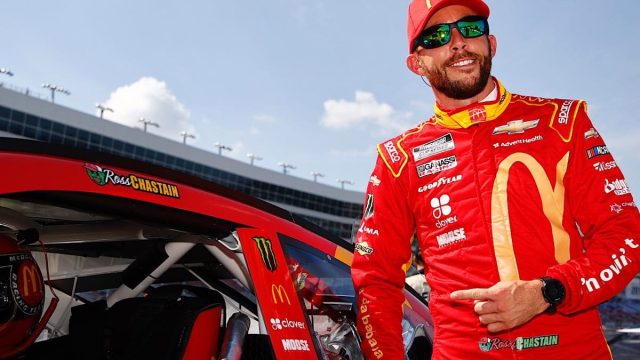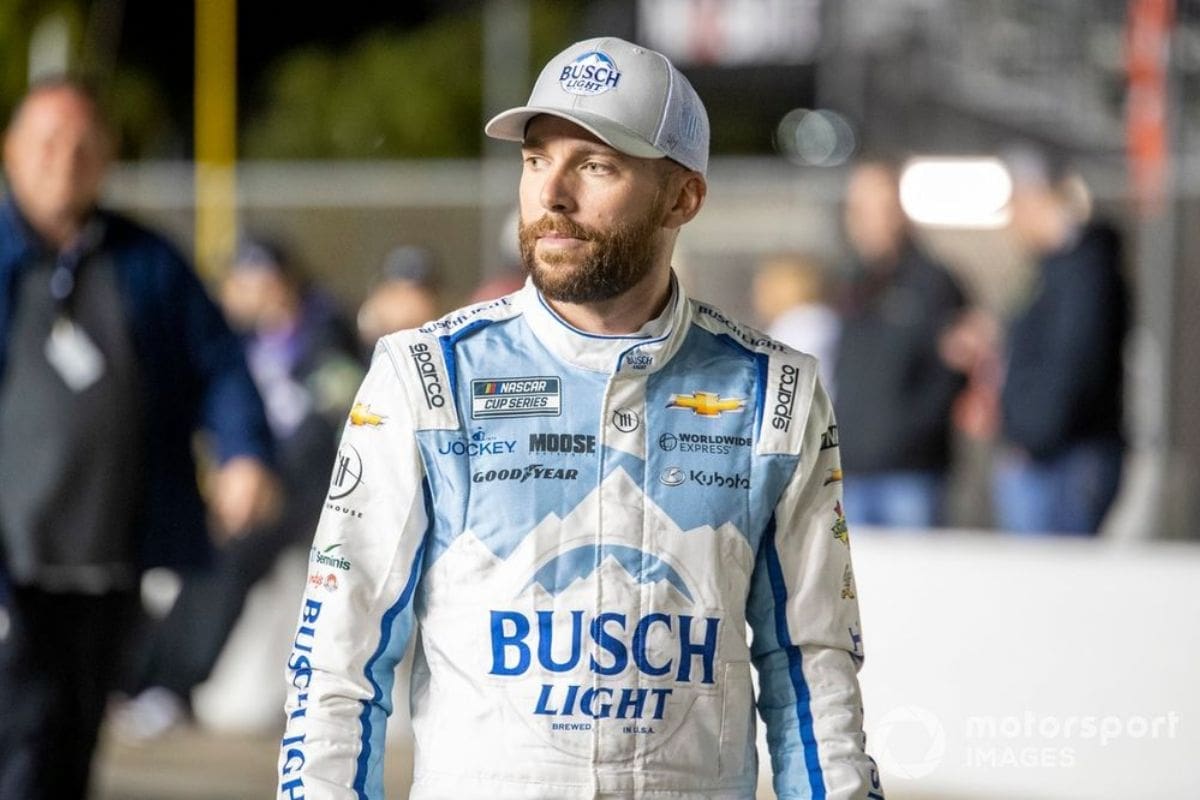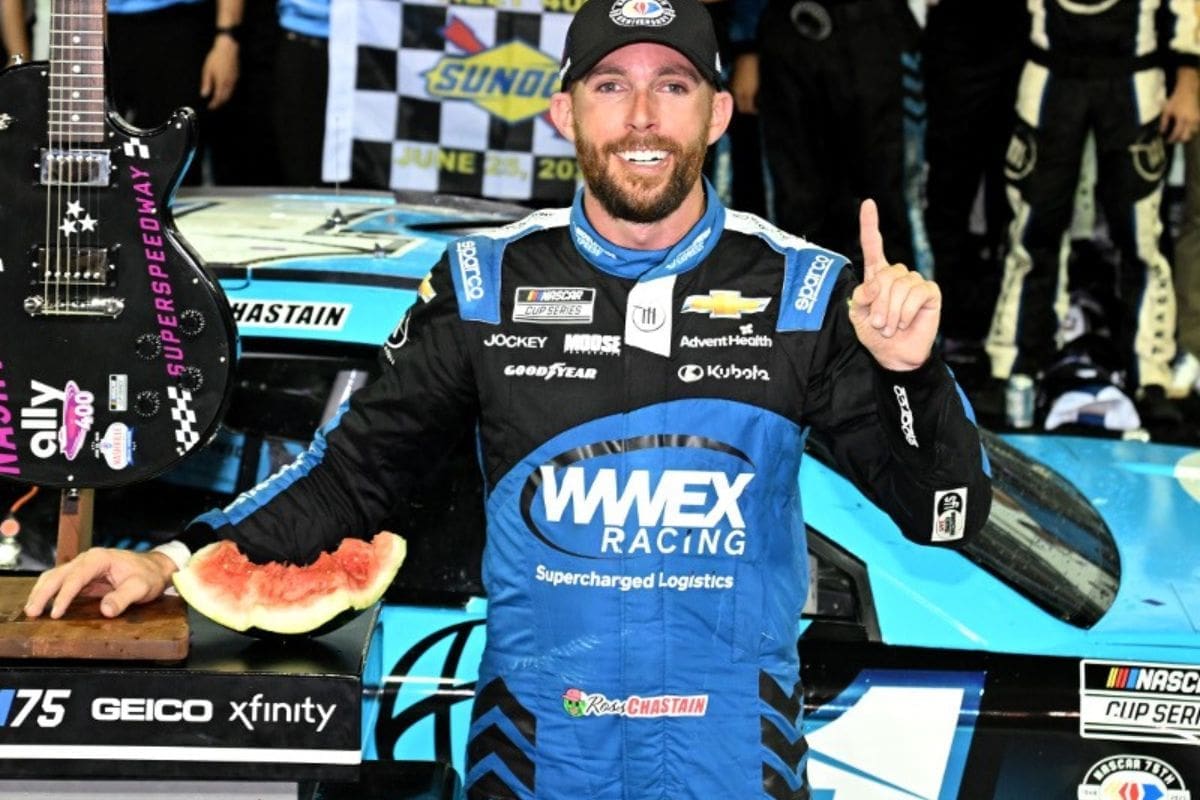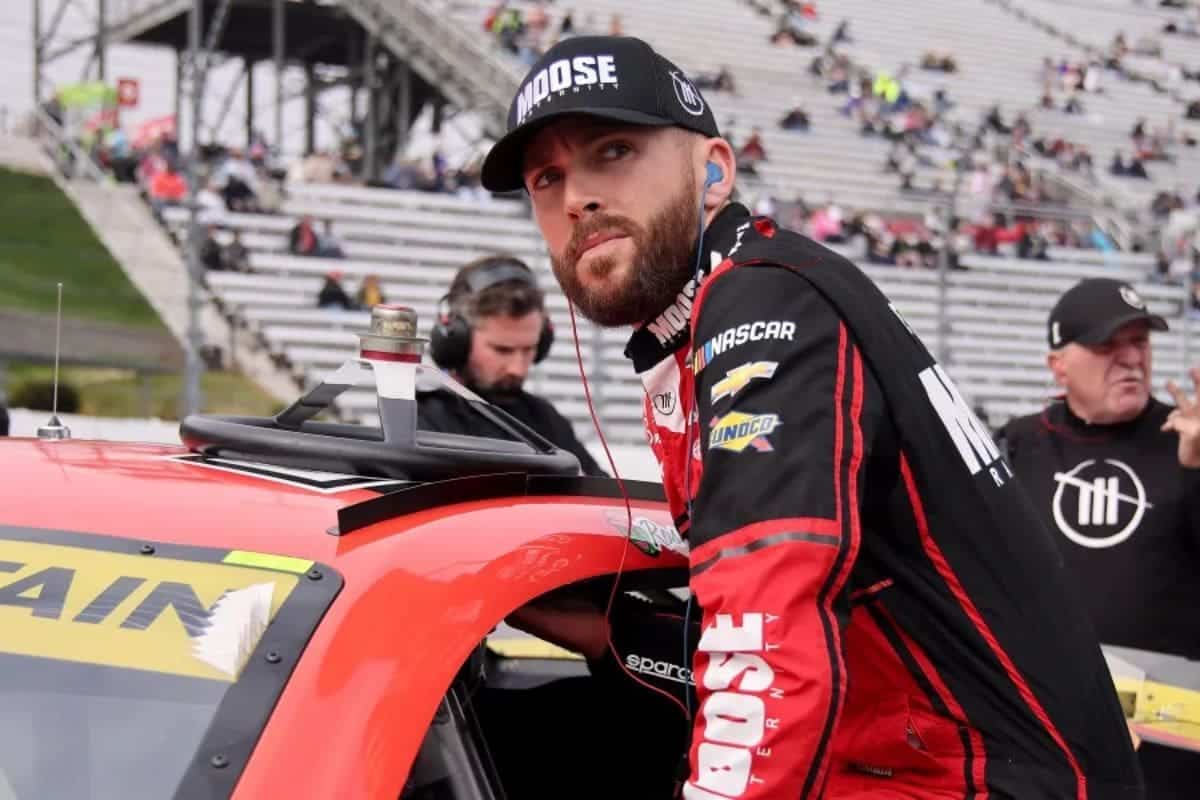Ross Chastain Reflects on Favoritism at Road America: Ross Chastain‘s recent commentary on perceived favoritism at Road America raises questions about the integrity and competitive balance within NASCAR. Despite the organization’s firm denial of such biases, Chastain’s observations highlight a deeper tension in the sport, reflecting the challenges faced by drivers from diverse backgrounds. His frank remarks invite scrutiny into the mechanisms of support that may accidentally favor certain competitors.
Key Highlights
- Chastain feels NASCAR neglects to recognize his competitive potential compared to peers like Kyle Larson, highlighting favoritism in the sport.
- He expresses frustration over the steep learning curve he faces transitioning between NASCAR and IMSA vehicles.
- Chastain’s recent performances at Road America, including finishes of seventh and fourth, indicate his capability to compete effectively.
- His commitment to mastering IMSA racing techniques shows his dedication, despite NASCAR’s lack of acknowledgment.
Ross Chastain’s Break and IMSA Debut
Ross Chastain’s recent entry into IMSA racing during a noteworthy break from NASCAR highlights his dedication to honing his skills on road courses, a passion that often feels overlooked within the confines of his primary series. This decision reflects a tactical approach to personal development amid a challenging NASCAR season, where his performance had dipped dramatically, resulting in three finishes outside the top 20 in four races. Unlike his peers who may opt for leisure during breaks, Chastain’s choice to compete in IMSA shows his commitment to improve and adapt.
Participating in IMSA allowed Chastain to investigate his affinity for road courses and served as a crucial opportunity to refine his craft in a different racing environment. The technical intricacies and unique challenges of sports car racing provide invaluable experience that can translate into improved performance on road courses in NASCAR. Chastain’s admission that NASCAR has largely disregarded his road course preference emphasizes the broader narrative of drivers seeking opportunities beyond their primary series to expand their skill set.
His enthusiasm for Road America and the IMSA platform highlights a proactive mindset, positioning him to capitalize on future opportunities. By immersing himself in a discipline that resonates with his strengths, Chastain reaffirms his identity as a versatile driver and lays the groundwork for a potential resurgence in his NASCAR endeavors.
Ross Chastain on Road America and Driving Challenges
Going through the complexities of Road America presents unique driving challenges that demand a distinct skill set, particularly for a driver shifting from the familiar confines of NASCAR vehicles to the precision required in sports car racing. The 4.048-mile, 14-turn circuit is not only longer but also displays a diverse array of cornering techniques and elevation changes that can test even the most seasoned competitors.
For Ross Chastain, who has shifted from NASCAR Cup Series and Xfinity machinery to the Aston Martin Vantage GT4, this alteration required an adaptation to a different rhythm and responsiveness. The heavier weight and unique handling characteristics of sports cars necessitate a refined approach to throttle control and braking that are fundamentally different from the stock cars he has piloted previously.
Chastain’s prior experiences at Road America, where he finished seventh and fourth in the Cup Series, provided him with a foundational understanding of the track’s subtleties. However, the switch to sports car racing marked a notable milestone, as Chastain welcomed challenges reminiscent of his early days in racing, recalling the initial driver change he experienced at age 14.
Teaming with Ken Fukuda, the IMSA Diverse Driver Scholarship winner, Chastain’s enthusiasm to learn and adapt was evident, revealing his commitment to mastering the intricacies of this iconic circuit. Road America, a personal favorite for Chastain, serves as a testing ground for his versatility as a driver, emphasizing the importance of adaptability in the constantly changing landscape of motorsports.
Chastain’s Frustration and Comparison with Peers
Chastain’s passion for racing at Road America is overshadowed by his frustration with NASCAR’s perceived neglect of his competitive potential, particularly when comparing his adaptability to that of his more versatile peers. His frank acknowledgment of the disparities between himself and top-tier drivers, such as Kyle Larson, reveals a deep-seated awareness of the dynamic nature of motorsports.
“I tell them that, they don’t listen. I think it’s a great facility. I know there are a lot of reasons why we aren’t here. But I still want to be up here. Flying into Milwaukee, driving up, it’s a beautiful country.” – (Chastain)
While Larson seamlessly shifts between racing disciplines—showing immediate skill in an IndyCar—Chastain faces a steeper learning curve, underlining the challenges inherent in adapting to different vehicles. This disparity fuels Chastain’s discontent with NASCAR’s lack of attention to his capabilities at Road America, a track he regards as a prime venue for showing his skills.
“Some of my competitors – guys who do multiple classes across the world – are different. You see Kyle Larson. He’s in an IndyCar and he’s immediately fast. He’s the best driver of my generation, my age group. That’s not me. I have to continue to try working at it, which I enjoy. But don’t think this is easy.” – (Chastain)
“I tell them that, they don’t listen,” he expressed, reflecting a sense of urgency and desire to compete at a high level. The serene environment of Wisconsin may inspire him, yet it is the competitive landscape that truly ignites his ambition.
Fan Reactions and Ken Fukuda’s Role
Amidst the buzz of Road America, fan enthusiasm for Chastain is noticeable, highlighting the unique connection he fosters with his supporters and the essential role Ken Fukuda plays in managing this dynamic. Chastain’s larger-than-life persona, characterized by his aggressive racing style and approachable demeanor, resonates deeply with fans, particularly the younger audience. This demographic is interested in his on-track performance and seeks personal interactions, which Chastain readily provides.
Ken Fukuda, in his multifaceted role, finds himself balancing responsibilities as a racing instructor and a crowd manager. His observations reflect a shift in the fanbase, as he notes the increasing presence of children and families at events. Fukuda’s pride in witnessing this evolution is evident; he emphasizes how Chastain’s engaging approach—taking time to pose for photos and answer questions—enhances the general fan experience. This commitment to interaction solidifies Chastain’s status as a fan favorite and contributes to a more vibrant and inclusive community around NASCAR.
“I think it’s incredible, and we’re seeing a different type of fan. So many kids, too. People making their diecast, and one side has a crushed side. He’s interacting with every single fan. He spends minutes smiling, taking pictures, asking questions.” – (Fukuda)
The importance of Fukuda’s role cannot be minimized; he serves as a bridge between the driver and the fans, ensuring that the enthusiasm is channeled positively. As Chastain continues to attract attention, both on and off the track, Fukuda’s ability to manage the growing fan engagement will be critical in sustaining this momentum and fostering a supportive environment within NASCAR. This connection between Chastain and his supporters, amplified by Fukuda’s efforts, highlights the symbiotic relationship that fuels the sport’s growth.
Ken Fukuda’s Praise for Chastain
Ken Fukuda’s admiration for Ross Chastain shines through as he highlights the driver’s courage and commitment to mastering the intricacies of the IMSA series, which sharply contrasts with NASCAR. Fukuda emphasized the bravery required to drive the competitive landscape of the Michelin Pilot Challenge, where Chastain drives 450-horsepower, production-based sports cars equipped with traction control and antilock brakes. This experience is fundamentally different from the familiar setup of NASCAR Chevy cars.
Fukuda’s insights reveal the essence of professionalism in motorsports. He noted, “To come to IMSA, Michelin Pilot Challenge is extremely competitive if not the most competitive series in the world. Completely different car.” Chastain’s willingness to tackle this challenge speaks volumes about his character and resolve. As Fukuda articulated,
“To say ‘I don’t care, I want to learn, I love driving, I want to figure this out. What a true pro looks like.”
Despite his self-doubts, Chastain’s IMSA fans have steadfast confidence in his racing ability, reinforcing the notion that mastery is as much about mindset as it is about skill.
News in Brief: Ross Chastain Reflects on Favoritism at Road America
Chastain’s reflections on favoritism at Road America emphasize the intricate interplay of competitive dynamics within NASCAR. Despite official denials, the perception of unequal advantages persists, bringing attention to the challenges faced by drivers from varying backgrounds.
This discourse shows the ongoing struggles for transparency and fairness in racing and highlights the need for continued dialogue about equity in the sport. Such insights are vital for fostering a more inclusive environment within the NASCAR community.
ALSO READ: Ross Chastain’s Playoff Struggles: What’s Really Behind the Slump?



